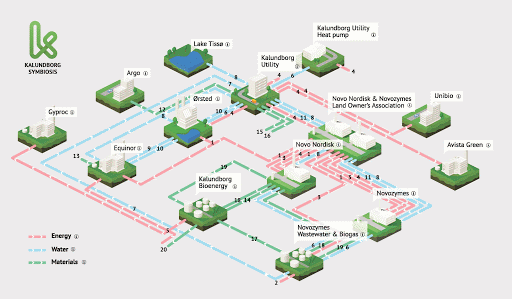Kalundborg Symbiosis a thriving example of large scale circular systems

Partnership between 9 public and private companies increases resilience and economic gains, while reducing the environmental impact and expenses transforming production paradigms
Description
Kalundborg Symbiosis is a partnership between 9 public and private companies in Kalundborg, Denmark. Since 1972, they develop the world’s first industrial symbiosis with a circular approach to production. The main principle is that a residue from one company becomes a resource at another, benefiting both the environment and the economy. Such symbiosis creates growth in the local area and supports the companies’ CSR efforts and climate change mitigation. The partners of Kalundborg Symbiosis have worked together since the 1960’s, resulting in a collaborative approach and openness to new symbiosis opportunities. By working together and exchanging material, water, and energy streams between the partners, Kalundborg Symbiosis increases resilience and economic gains, while reducing the environmental impact and expenses.
Relevance
The Kalundborg Symbiosis is a great example of circularity on an industrial scale. Partnership and collaboration are existent since the 60s, showcasing that new technological advancements are not always crucial for promoting sustainable innovation. Could manufacturers learn from this exceptional example to understand deeply how to think circularity wise?
Learn more
Vision
EIT Manufacturing vision for the future of Manufacturing in Europe in 2030, called ‘Fixing Our Future
Enablers
Enablers for future change and actions to make the vision, as described in Fixing Our Future, a reali
Signals
A knowledge library of over 100 signals of change, as examples of emerging manifestations towards the
About the project
Learn more about the background, the process and the people and the contributors behind this project.

